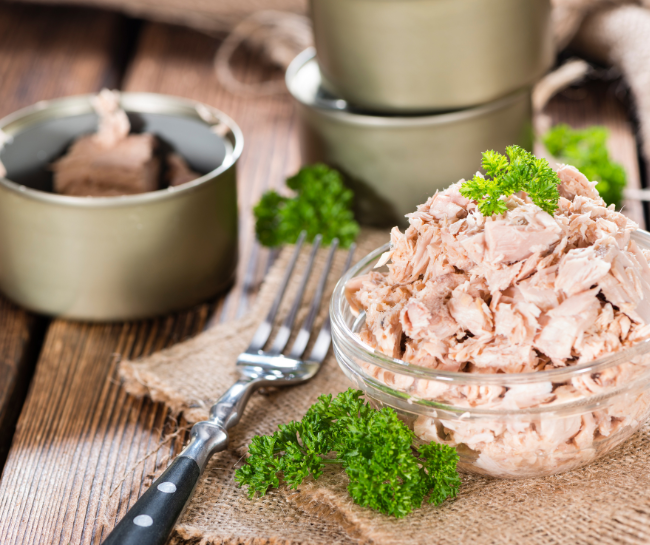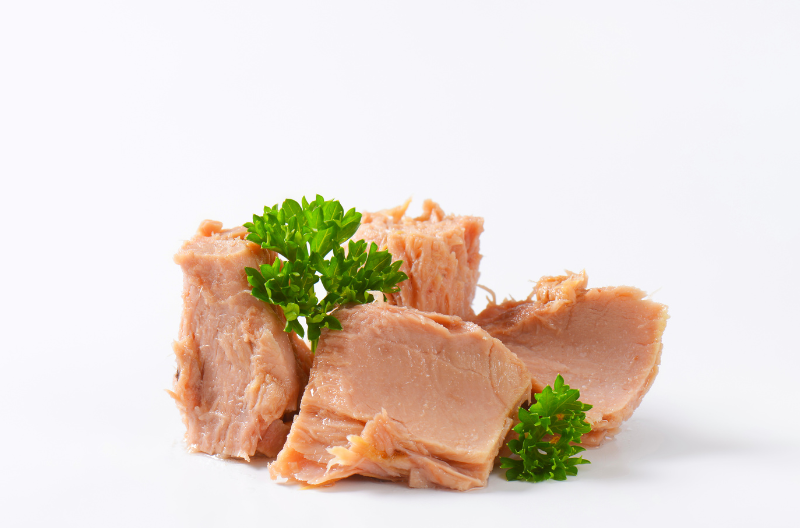Tuna in a can is a kitchen pantry staple in many households. It is affordable, high in protein, and may be preserved for several years. Despite these benefits, you may wonder if canned tuna is healthy and how much you can take safely. So, is canned tuna acid reflux-friendly?
Is canned tuna acidic

Tuna is a culinary staple. It’s cheap, high in protein, and keeps for years. Despite these benefits, you may wonder if canned tuna is healthy and how much you may take. Is tuna beneficial for GERD?
Tuna is somewhat acidic and safe to eat on a low-acid diet. High in nutrients, it may help you stay healthy while treating GERD and acid reflux. Fresh and canned tuna are acidic and can be included in any diet.
💡 Both fresh and canned tuna are mildly acidic, so it’s OK to consume both as part of your diet regardless of what dietary plan you follow.
Is canned tuna good for acid reflux

Can tuna help acid reflux? Tuna is a low-acid fish, making it acceptable for a GERD diet. It’s high in nutrients, making it nutritious and fit.
You may wonder if tuna in a can is good for acid reflux. Tuna is a low-acid fish, so it is safe to eat as part of a diet. It also has a lot of nutrients, which makes it a great choice for staying healthy and fit.
You may question if canned tuna is beneficial for acid reflux. Tuna is a low-acid fish, making it suitable to include in a diet designed to alleviate GERD and acid reflux symptoms. In addition, it is rich in nutrients, making it a perfect food for maintaining a healthy and fit body.
Lean meats minimize acid reflux symptoms. Salmon, tuna, sardines, and trout are high in omega-3s. Walnuts, flaxseed, olive oil, and avocados contain healthful fats.
Is tuna healthy

Tuna is a high-omega-3 fish. This vitamin helps your blood vessels, lungs, heart, and immune system. Omega-3 fatty acids are cell-building components and boost energy.
Tuna is a fatty fish rich in omega-3 fatty acids. This vitamin is necessary for the healthy functioning of your blood vessels, lungs, heart, and immune system. Omega-3 fatty acids are the building blocks of all of your cells and help to regulate your energy levels.
Also, both fresh and canned tuna are low in calories and are a good source of protein. Protein is an important macronutrient that helps muscles stay healthy and heal after working out. This vitamin also helps make cells and keeps your energy level steady throughout the day.
The FDA recommends that adults eat 3–5 ounces (85–140 grams) of fish 2–3 times a week to get enough omega-3 fatty acids and other beneficial nutrients.
What should I eat if I suffer from acid reflux

What you eat has an impact on how much acid your stomach produces. It is essential to consume the right foods to manage acid reflux.
These may include:
- Oatmeal – This high-fiber food may be able to soak up acid in the stomach and reduce symptoms of acid reflux. Whole grains and bread are other sources of fiber.
- Fish– Oily fish like sardines, tuna, salmon, and trout have a lot of omega-3 fatty acids, which are good fats. Several more common sources of heart-healthy fats are extra virgin olive oil, flaxseed, walnuts, and avocados.
- Vegetables – Vegetables may help lower stomach acid since they are naturally low in fat and sugar. Cucumbers, leafy greens, broccoli, and asparagus are all options.
- Lean Meat – Turkey, and chicken are low in fat and may help with acid reflux symptoms.
- Noncitrus Fruits – Citrus fruits and other acidic fruits are more likely to trigger acid reflux. Instead of citrus fruits, choose apples, bananas, melons, and pears.

Furthermore, it is also essential to control what you drink! Here are a few drinks that may assist with acid reflux:
- Almond milk– You can use it to counteract acidity because it is neutral. You should avoid full-fat milk since it might worsen symptoms!
- Ginger tea– It has a calming effect on the stomach and can minimize the formation of stomach acid.
Don’t forget to leave a comment and read the related blog: Why Do I Feel Tired After Taking Vitamins

